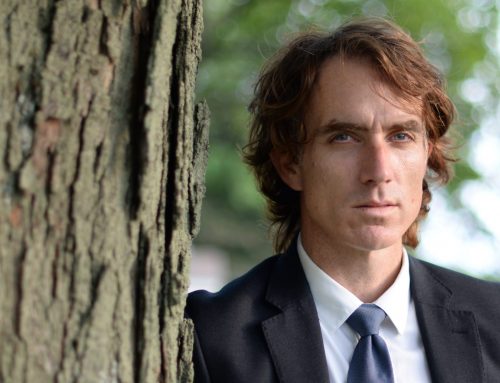The morning was occupied by a presentation by the commander of the Operational Communications Centre, Daryl Macdonald. Mr. Macdonald may technically be considered a witness of the MCC, but the evidence unfolded as a pre-scripted discussion between Commission counsel Jennifer Cox Q.C. (formerly of Dalhousie Legal Aid) and Mr. Macdonald. He talked about how the 911 system works in Nova Scotia. His testimony was heavy on technical detail, and in sum seemed to show that the system works very well and that things happen on a very timely basis.
Significantly, we had our first look at how cross examination questions from the other parties will be handled. It was certainly not the same as a regular cross examination procedure. Mr. Macdonald finished his direct examination with Ms. Cox just before the lunch break. Over lunch, the lawyers for all parties discussed potential cross examination questions, and when the MCC was back in session, Commission counsel, Ms. Cox indicated to the Commissioners that there were questions the parties wanted to ask that she felt were valid. The Commissioners then stated that they would allow some questions, starting with some from Ms. Cox on behalf of the parties, followed by a few questions from four other lawyers.
Telling the government your questions in advance is unusual, as is having another lawyer ask your questions for you. Both are demonstrative of an effort at controlling the process and narrative. When one of the lawyers, respected Burchell MacDougall partner Stephen Topshee, asked a question that seemed not to have been anticipated, it was Ms. Cox who spoke on behalf of the Commission, not any of the Commissioners.
The more important part of the day, from an evidentiary standpoint, was the final few hours, with a presentation from Commission counsel, Roger Burrill. This presentation covered the initial hours in Portapique from the perspective of the police, reviewing what they knew and what they did.
I am personally familiar with two of the first three officers on the scene, Stuart Beselt and Adam Merchant. Cpl. Beselt was stationed in Port Hawkesbury and Cst. Merchant was in Antigonish. Both are over big men, over six feet, with Cpl. Beselt probably closer to 6’5”. I handled criminal files where they were involved and found them both to be diligent in their reports and fair in their actions.
Cpl. Beselt played in our men’s hockey league as well, and was a tough, aggressive competitor on the ice. You can tell something about a person by the way they play hockey, and I would have had a hard time believing he did not want to take an active approach to this situation, dangerous though it would certainly have appeared at the time.
The evidence from the MCC today confirms that Cpl. Beselt, Cst. Merchant, and Cst. Patton behaved bravely, searching for the active shooter on foot, cutting through the pitch-black woods towards the sound of gunfire, and checking on the Blair and McCully children several times. Cpl. Beselt also thought (at 11:16pm) to recommend to the commanding officer that the public be alerted to what was happening.
One of the main things I was watching for this afternoon was any sign that the police might reasonably have thought the shooter had killed himself, and perished in one of the fires of his own making. This has been floated as a theory, or potential justification for the police not issuing more pointed and timely warnings to the public.
The idea that the killer may have died in Portapique is founded somewhat on the notion that he could not have escaped past the police stationed at the one main exit from the community to the main highway. Of course we now know, and locals would have long known, that there is another way out, through a blueberry field road to Brown Loop. This exit was not monitored, except inadvertently for about 10 minutes by a local volunteer firefighter. There was one officer who told the other officers about there being an alternate exit, at 10:48pm, though it is likely the killer had already left by then.
Tomorrow and Thursday, the Participants will have their opportunity to make submission to the Commission as to any gaps in the factual record, and any recommendations they may have for further witnesses and evidence that might fill in those gaps. This will be their first real opportunity to openly challenge the Commission’s work, and so will be a chance for everyone to show their stuff. I will be watching closely.
Reading back through yesterday’s Foundational Document, a question about what communications equipment the killer may have been able to access arises. After he shot Andrew MacDonald, the killer followed MacDonald as he drove out towards the main highway, but stopped and turned back into the subdivision before getting within sight of the police who were stationed at the main entry point. Could he have known they were there? (Recall that the facts surrounding the shootings at the Onslow Fire Hall seemed consistent with the suggestion that Wortman had access to police communications.)
Had he gone any further, it is likely he would have been seen and likely caught. Instead, he drove back down to the home of Joanne Thomas and John Zahl, killed them, and proceeded to his warehouse again (where he killed Corrie Ellison) before leaving the area through the blueberry field. The Ellison killing did not seem targeted, though the Thomas/Zahl killings seem like they may have been part of a plan the killer may have had for people in his immediate vicinity. He could have taken off, but instead returned inside the community, killed three more people, and then left by an alternate route. Perhaps he was looking for Ms. Banfield.

